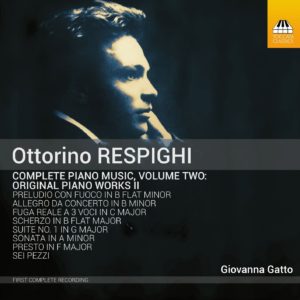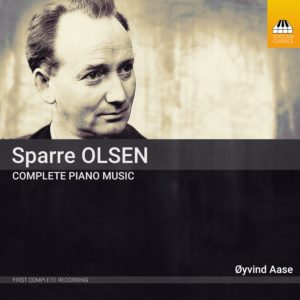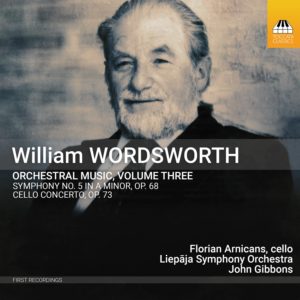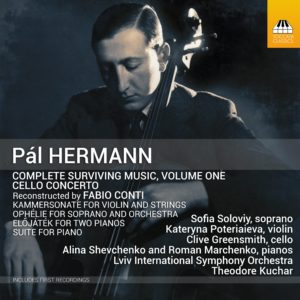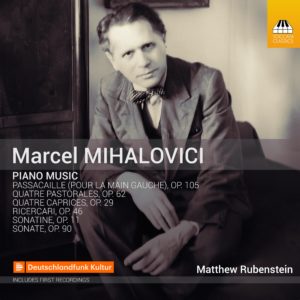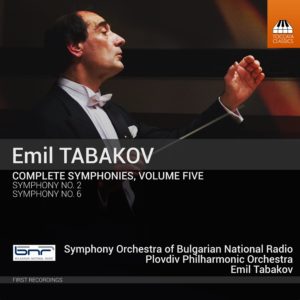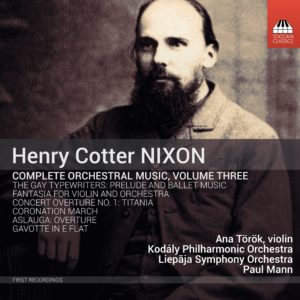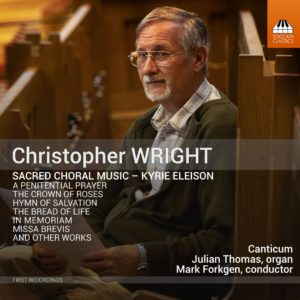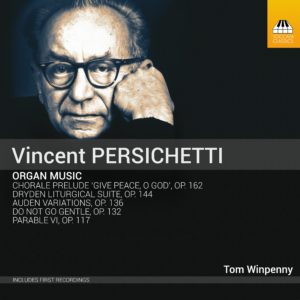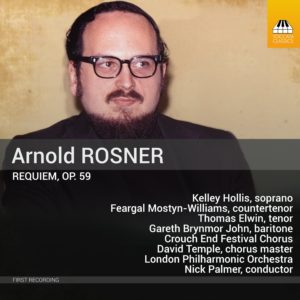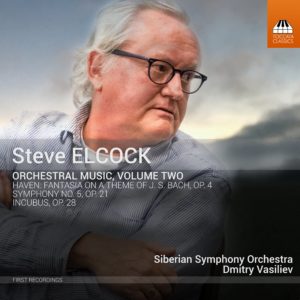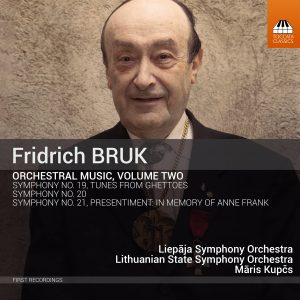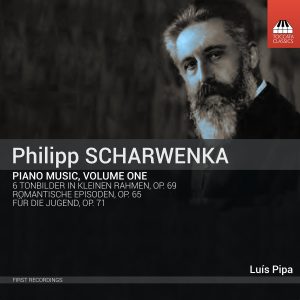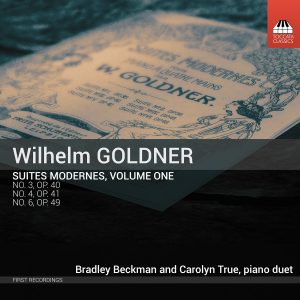Search Results for "Space Wolf: The First Omnibus mp3 torrent" – Page 21
Georg Philipp Telemann: Harmonischer Gottes-Dienst, Volume 7: Six Cantatas
This is the seventh CD in the first complete recording of the 72 cantatas in Georg Philipp Telemann’s collection Harmonischer Gottes-Dienst, published in Hamburg in 1726 – the first complete set of cantatas for the liturgical year to appear in print. The cantatas are designated for voice, an obligato instrument (recorder, violin, transverse flute or oboe) and basso continuo, and generally take the form of two da capo arias with an intervening recitative. Although intended for worship, both public and private, Telemann’s cantatas are a masterly blend of tunefulness with skilled counterpoint and vocal and instrumental virtuosity.
Bergen Barokk
Franz Vitzthum, counter-tenor
Peter Holtslag, transverse flute
Thomas C. Boysen, theorbo
Markku Luolajan-Mikkola, bass viola da gamba
Hans Knut Sveen, harpsichord (1-6, 10-12,16-18), organ (7-9, 13-15)
Ottorino Respighi: Complete Piano Music, Volume Two
Respighi’s orchestral works are some of the most popular in the mainstream repertoire. His output of piano music, by contrast, is as good as unknown, and this Toccata Classics series will be the first-ever to present it all: original works and transcriptions alike, for solo piano, piano four hands and two pianos. The prentice works on this second volume of solo works reveal a Respighi with roots in the high-Romantic past of Schumann, Chopin and Brahms, but they also show the first signs of his later interest in the Italian pre-Baroque.
Giovanna Gatto piano
Carl Gustav Sparre Olsen: Complete Piano Music
Norwegian folksong and dance constitute the very DNA of the music of Carl Gustav Sparre Olsen (1903–84), on both a large and a small scale – from Draumkvedet, the 1936 oratorio that was his first major success, to the tiny miniatures that form most of his piano music, recorded here in its entirety for the first time. The apparent simplicity of much of this material belies the unassuming sophistication of its construction: many of these pieces, some barely a minute long, seem – to adapt William Blake – to contain the world in a grain of sand.
Øyvind Aase, piano
William Wordsworth: Orchestral Music, Volume Three
The music of William Wordsworth (1908–88) – a great-great-grandson of the poet’s brother Christopher – lies downstream from that of Vaughan Williams and Sibelius; like that of his contemporary Edmund Rubbra, Wordsworth’s music unfolds spontaneously, as a natural process. This third volume of his orchestral works brings two major scores in their first studio recordings. Wordsworth’s Cello Concerto is a work of symphonic proportions, blending angular rough-and-tumble with a sober lyricism in a style that sits somewhere between Shostakovich and Bloch. The Fifth Symphony has an even grander sense of scale, its radiant first movement and the introduction to the confident finale unfolding as calmly and unhurriedly as a change of season; the martial tone of the gruff scherzo, by contrast, is laced through by an impish sense of humour.
Florian Arnicans, cello (Tracks 1-3)
Liepāja Symphony Orchestra
John Gibbons, conductor
Pál Hermann: Complete Surviving Music, Volume One
Pál Hermann, born in Budapest in 1902, was not only one of the leading cellists of his generation: he was also an important composer, one of the major figures in Hungarian music in the generation after his teachers Bartók and Kodály. But since only two of his works were published before his early death, in 1944, at the hands of the Nazis, and many more of them were lost, he has not had the esteem that he deserves. This series will present all his surviving compositions, most of them in first recordings. The major work on this first album, Hermann’s Cello Concerto of 1925 in a reconstruction by the Italian composer Fabio Conti (b. 1967), sits somewhere between Bartók and Korngold and bids fair to become a staple of the cello repertoire.
Clive Greensmith, cello (Tracks 1-5)
Kateryna Poteriaieva, violin (Tracks 6-9)
Alina Shevchenko, piano (Tracks 10-13)
Roman Marchenko, piano (Track 10)
Sofia Soloviy, soprano (Track 14)
Lviv International Symphony Orchestra (Tracks 1-9, 14)
Theodore Kuchar, conductor (Tracks 1-9, 14)
David Maslanka: Music For Wind Ensemble
Although the American composer David Maslanka (1943–2017) wrote in a wide range of genres, it is for his generous output of music for wind band that he is best known. Three of the works heard here are in effect symphonic poems, all three infused with that big-hearted sense of space found in the best of American music and the quiet dignity of those endless open landscapes, but also energised by a powerful sense of freewheeling drama. The fourth piece is a charming and hugely engaging presentation of the instruments of the symphonic wind ensemble, a latter-day Peter and the Wolf – likewise intended for children and similarly bubbling with good tunes. The composer himself was closely involved in the preparation for these recordings – the last major project involving his music before his death – which now stand as a testament to a man much-loved in American musical circles.
Middle Tennessee State University Wind Ensemble
Michael Fleming, narrator (Track 2)
Reed Thomas, conductor (Track 1)
Rubén Darío Gómez, conductor (Track 2)
C. Allen Kennedy, conductor (Track 3)
Manuel Monge-Mata, conductor (Track 4)
Martin Gaines, conductor (Track 5)
Marcel Mihalovici: Piano Music
The ‘École de Paris’ was a group of composers from central and eastern Europe who made the French capital their home in the 1920s and ’30s. One of their number was the Romanian Marcel Mihalovici, born in Bucharest in 1898 and based in Paris from 1919 until his death in 1985 – one of the most significant of twentieth-century composers who has yet to receive the recognition he deserves. This first album dedicated to his piano music traces his stylistic evolution, the early blend of French insouciance, echoes of eastern European folk-music and Neo-Classical contrapuntal clarity gradually taking a tougher turn and blending Bartók and Bach. It ends with a monumental passacaglia for the left hand alone, one of the most daunting summits of the piano literature.
Matthew Rubenstein, piano
All Except * First recordings
EMIL TABAKOV Complete Symphonies, Volume Five
The music of the Bulgarian composer-conductor Emil Tabakov (b. 1947) explores the darker side of the human spirit in epic scores as austere as they are powerful. The Second Symphony is a diptych where the wild, stamping, manic whirl of the second movement releases the store of energy pent up by the grief-stricken first. The four-movement Sixth Symphony is a tragic utterance in the monumental manner of the middle-period Shostakovich symphonies, bleak and gripping in equal measure.
Symphony Orchestra of Bulgarian National Radio (Tracks 1 – 2)
Plovdiv Philharmonic Orchestra (Tracks 3 – 6)
Emil Tabakov, conductor
FIRST RECORDINGS
Henry Cotter Nixon: Orchestral Music, Volume Three
The English composer-conductor Henry Cotter Nixon (1842–1907) had entirely disappeared from music history until this series – presenting all his surviving orchestral music in its first recordings – revealed him to have been one of the most accomplished English composers of his generation, with a style that takes in elements of Mendelssohn, Schumann, Weber, Brahms and Sullivan. This third and final volume mixes music for the concert hall and the stage and adds the Coronation March for Edward VII that turned out to be Nixon’s last composition. Most of the pieces here were left incomplete, but thanks to Paul Mann’s orchestrations they now confirm Nixon’s position as one of the superior tunesmiths of Victorian England.
Ana Török, violin (Track 2)
Kodály Philharmonic Orchestra (Tracks 1 – 5, 7)
Ferenc Nagy, euphonium (Track 5)
Liepāja Symphony Orchestra (Track 6)
Paul Mann, conductor
FIRST RECORDINGS
Christopher Wright: Sacred Choral Music
The English composer Christopher Wright, born in Suffolk in 1954, declares that he is ‘not fettered by fashion, style, ideology or gimmickry or some insatiable desire to be original’; instead, he writes music that aims to communicate directly with the listener – although it can also be thorny and challenging. This first-ever album of his sacred choral music reveals it to be in the British-cathedral tradition of composers like Benjamin Britten, William Mathias, Bernard Rose and Malcolm Williamson: the melodic lines may on occasion be angular and the harmonies sometimes tart, but Wright’s concern with immediacy of expression ensures that the ‘personal prayers’ embodied in these pieces can be readily understood and appreciated.
Canticum
Julian Thomas, organ
Mark Forkgen, director
First recordings
Vincent PERSICHETTI: Organ Music
The larger part of the organ music of the American composer Vincent Persichetti (1915–87) was composed towards the end of his life, with some of those pieces receiving their first recordings here. Several are based on hymn tunes, which can often be heard in the background – re-emerging in glorious affirmation in the Auden Variations. On occasion the language suggests a kaleidoscopic admixture of Hindemith and Messiaen, bristling with edgy flashes of colour; and Do not go gentle, an essay for pedals alone after the Dylan Thomas poem, is a statement of austere power. What these highly contrasted works have in common is complete textural clarity: Persichetti had been playing the organ since boyhood, and his writing for the instrument is that of a master.
Tom Winpenny, organ of St Alban’s Cathedral
ALL EXCEPT * FIRST RECORDINGS
Arnold ROSNER: Requiem, Op. 59
Far from being a treatment of the usual Latin, the Requiem of the New York-based Arnold Rosner (1945–2013) sets spiritual and secular texts on death from a number of the world’s cultures, including Whitman, Villon, the Tibetan Book of the Dead, a sutra from Zen Buddhism and the Jewish Kaddish. The work of a young man (Rosner was 28 when he wrote it), this Requiem is both monumental and wildly energetic – but it also encompasses passages of transcendent beauty. His musical language clothes the modal harmony and rhythm of pre-Baroque polyphony in rich Romantic colours, producing a style that is instantly recognisable and immediately appealing. Some of the music was first written for an aborted operatic treatment of Ingmar Bergman’s film The Seventh Seal, where the main character plays chess with Death; in like spirit, Rosner’s Requiem is a major statement of human defiance in the face of mortality, even if its gentle closing pages bring uneasy acceptance
Kelley Hollis, soprano (Tracks 4,8)
Feargal Mostyn-Williams, counter-tenor (Tracks 1,7)
Thomas Elwin, tenor (Tracks 1,2,7)
Gareth Brynmor John, baritone (Tracks 1,5,7)
Crouch End Festival Chorus (Tracks 1,5,6,9)
David Temple, conductor (Track 6), chorus master (Track 1,5,9)
London Philharmonic Orchestra (Tracks 1-5, 7-10)
Nick Palmer, conductor (Tracks 1-5, 7-10)
First recording
Steve ELCOCK: Orchestral Music, Volume Two
This second volume of orchestral music by the English composer Steve Elcock (b. 1957), long since resident in France, brings three powerful works all with their origins in earlier pieces. Incubus examines the terrors of nightmare-riven sleep in a vigorous symphonic essay based on a movement from Elcock’s string quartet Night after Night. The impulse behind Haven, an expansive and surprisingly muscular fantasy, is the Sarabanda theme from Bach’s First Partita for solo violin. And Elcock’s Fifth Symphony takes its cue from the most famous of all Fifth Symphonies, re-examining Beethoven’s structural logic in Elcock’s own musical language to produce a volcanic new Fifth, its charge of wild energy husbanded to maximum dramatic effect.
Siberian Symphony Orchestra
Andrey Lopatin, violin (Track 2)
Grigorii Vever, clarinet (Track 5)
Evgeny Plaksin, horn (Track 5)
Dmitry Vasiliev, conductor
FIRST RECORDINGS
Fridrich BRUK: Orchestral Music, Volume Two
Fridrich Bruk – born in Kharkov in 1937 and a Finnish resident since 1974 – made his name as a composer of tangos. But the heart of his music lies in a series of (to date) 21 symphonies, which have a strong narrative element, some reflecting Jewish themes, others inspired by Karelia and Finland. The three most recent together form a kind of meta-symphony premised on the persecution of the Jews in the first half of the twentieth century. Bruk’s kaleidoscopic use of orchestral colour, his angular but expressive melodies and his dramatic musical language reflect this urge to chronicle the outrage visited on his fellow Jews – and which directly impinged on his own life.
Liepāja Symphony Orchestra (Tracks 1-3, 7-8)
Arvydas Kazlauskas, baritone saxophone (Tracks 1-3)
Lithuanian State Symphony Orchestra (Tracks 4-6)
Māris Kupčs, conductor
First recordings
Philipp SCHARWENKA: Piano Music, Volume One
As composer, pianist and educationalist, the Prussian Philipp Scharwenka (1847–1917) was one of the most highly respected musicians of his day, although his star faded soon after his death. His music – more conservative and classical in orientation than that of his pianist-composer brother, Xaver – sits somewhere between Chopin and Brahms, with echoes of Schubert and Schumann. This first instalment of a survey of his piano music is intended to put these immediately attractive works before the public once again – for the first time in over a century.
Luís Pipa, piano
Wilhelm GOLDNER: Suites Modernes, Volume One
Wilhelm Goldner (1839–1907) was one of the many composer-pianists who populated European musical life in the nineteenth century. Born in Hamburg, six years after Brahms, he trained in Leipzig and made his name and his living in Paris, where his attractive and easy-going music became a favourite of the salons. His first Suite moderne for piano duet, written in 1875, proved so popular that his publisher asked for more, and over the next twelve years Goldner composed five further Suites modernes. Although all six were reprinted in 1904 (by Universal in Vienna, no less), they have long since slipped from sight, and these first recordings restore their charms to modern audiences.
Brad Beckmann and Carolyn True, piano duet
Stay In the Know
JOIN THE TOCCATA NEWSLETTER
"*" indicates required fields
By visiting our site, you agree to our privacy policy regarding cookies, tracking statistics, etc.

